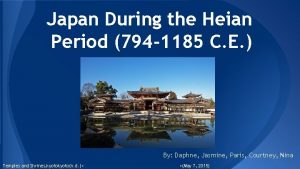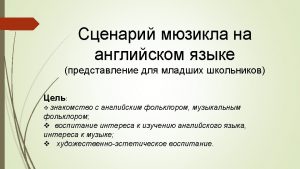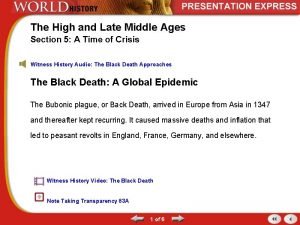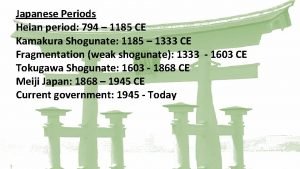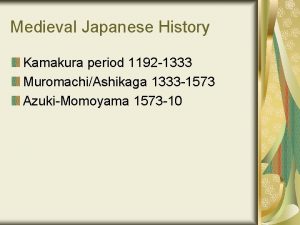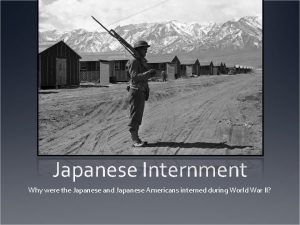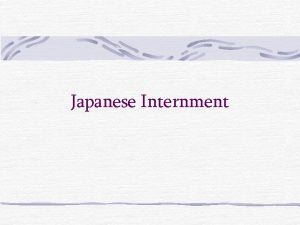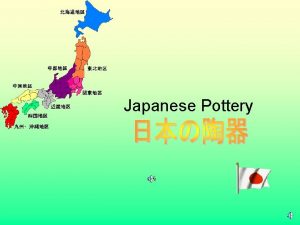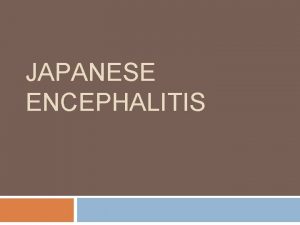Late Old Japanese 794 1192 e and ye


![Late Old Japanese (794 -1192 ) • /f/ [ɸ] in word medial position became Late Old Japanese (794 -1192 ) • /f/ [ɸ] in word medial position became](https://slidetodoc.com/presentation_image/aec1814cc43ab30e61d066b5311a6169/image-3.jpg)




- Slides: 7


Late Old Japanese (794 -1192 ) • /e/ and /ye/ > /ye/ – enoki ‘Japanese hackberry’ > yenoki – yeda ‘tree branch’ (unchanged) • /o/ and /wo/ > /wo/ – oki ‘offing’ > woki – woka ‘hill’ (unchanged) • /i/ and /wi/ > /i/ – iru ‘to need’ (unchanged) – wiru ‘to exist’ > iru • Influenced by the Chinese sound system, the voiced consonants /b, d, z, r, g/ began to appear word initially. 2
![Late Old Japanese 794 1192 f ɸ in word medial position became Late Old Japanese (794 -1192 ) • /f/ [ɸ] in word medial position became](https://slidetodoc.com/presentation_image/aec1814cc43ab30e61d066b5311a6169/image-3.jpg)
Late Old Japanese (794 -1192 ) • /f/ [ɸ] in word medial position became /w/ – /fa, fi, fu, fe, fo/ > /wa, wi, u, we, wo/ – fafa (modern haha) ‘mother’ > fawa – kafu ‘to buy’ > kawu (= kau) • Today, the topic particle wa is still written as は, reflecting this sound change. • The consonant corresponding to today’s /s/, which was /ts/ or /ch/ in Old Japanese, became /s/ or /sh/. 3

Late Old Japanese (794 -1192 ) • The conjunctive particle te was added to the verb adverbial form. • However, when the adverbial form ended in /ki/ or /gi/, the /ki + te/ and /gi + te/ sequences respectively became /ite/ and /ide/. – aruki ‘walk’ + te > aruite – oyogi ‘swim’ + te > oyoide • When the final syllable was /bi/ (= /mb/), /ni/, or /mi/, the sequence with te became /nde/. – tobi ‘fly’ + te > tonde – sini ‘die’ + te > sinde – yomi ‘read’ + te > yonde 4

Late Old Japanese (794 -1192 ) • When the final syllable of the adverbial form was /ti/, /fi/, or /ri/, the sequence with te became /tte/. – mati ‘wait’ + te > matte – ifi ‘say’ + te > itte – ari ‘exist’ + te > atte • Some occurrences of /ku, gu, fi, bi, mi/ became /u/. – nikuku ‘feeling disgusted’ > nikuu (= nikū) – kanasiku ‘being sad’ > kanasiu 5



